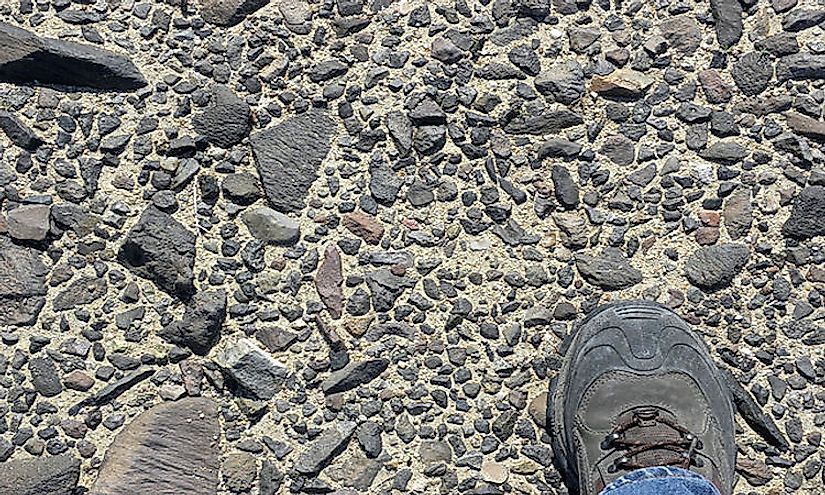Aeolian Landforms: What Is A Desert Pavement?

What Is A Desert Pavement?
Aeolian landforms are landforms on the surface of the earth produced by erosive or constructive actions of the wind. The Aeolian process is not unique to the earth only but has also been studied in other planets. In regions with sparse vegetation, the wind may erode, transport, and deposit material. Aeolian landforms are mainly common in an arid environment such as the desert. Aeolian landforms are formed in areas where the wind is the primary source of erosion while the deposits include sand and gravel. Some regions in the wilderness may experience extreme erosion to form deflation zones. The Aeolian deflation zones are made up of desert pavements which are examples of Aeolian landform alongside the blowout, yardangs, dune, sandhill, and barchans.
Overview Of Desert Pavement
Desert pavements are sheet-like surfaces of rock particles that are left behind after the wind, or the water has removed the fine particulate matter or sand. A desert pavement is covered by closely packed, rounded rock fragments of the pebble. The rock pebbles are intermixed with silt that is devoid of any vegetation. Desert pavements are not unique to any particular region of the earth as implied by the different names for the desert pavement. In Australia, the desert pavement is called Gibber while in North Africa it is referred to as a reg. Other names of desert pavement include Sai and serir. Once the desert pavement is formed, it becomes a shield of a sort by creating resistance to wind and water preventing further soil erosion. Some of the exceptionally old soils and rock particles are found below the desert pavement. Desert pavements are coated with desert varnish on the surface. The varnish is dark brown or a shiny coating containing some clay minerals
Formation Of A Desert Pavement
Because of the slow process of the formation of desert pavements, several theories have been put forward to explain the formation process. The studies of different desert pavements have yielded different age estimates ranging from thousands to tens of thousands of years. However, all the theories incorporate the role of wind, erosion, and rains in the formation process. A common theory suggests that desert pavements are formed through gradual removal of sand and other fine particles by the wind and intermittent rains leaving behind the large fragments. The larger rock particles are shaken into place by actions of different agents such as rain, wind, gravity, and animals. Once the pavement is formed the removal of fine particles ceases because the pavement acts as a barrier to further erosion.
The second theory suggests that desert pavements are formed from a shrink or swell properties of clay under the pavement. The clay expands when it absorbs the water and cracks along weak planes when it dries. The rock fragments are large enough not to slip back down into the cracks while the fine particles can fill the cracks. With time, the pavement stabilizes preventing further changes to its formation.
The third theory is used to explain the formation of desert pavement in Cima Volcanic Field. Here, the top layer is the beginning point whereby it is deposited and begins to undergo weathering by the wind. The rocks on the surface are fractured due to hot climate change. The silt infiltrates the spaces between the fragments reaching below the top layer causing the layer to be pushed upwards. The layer becomes impermeable preventing erosion of the soil beneath.
Threats To Desert Pavements
Desert pavements are mainly threatened by reckless human activities such as poor road use and reckless driving. Alterations to the pavements are likely to be permanent and will probably not recover due to the extremely slow process.











